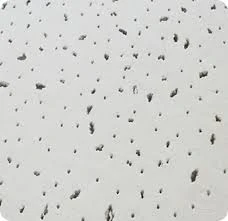- Afrikaans
- Albanian
- Amharic
- Arabic
- Armenian
- Azerbaijani
- Basque
- Belarusian
- Bengali
- Bosnian
- Bulgarian
- Catalan
- Cebuano
- Corsican
- Croatian
- Czech
- Danish
- Dutch
- English
- Esperanto
- Estonian
- French
- German
- Greek
- Hindi
- Indonesian
- irish
- Italian
- Japanese
- Korean
- Lao
- Malay
- Myanmar
- Norwegian
- Norwegian
- Polish
- Portuguese
- Romanian
- Russian
- Serbian
- Spanish
- Swedish
- Thai
- Turkish
- Ukrainian
- Uzbek
- Vietnamese
Гру . 02, 2024 02:02 Back to list
ceiling t bar bracket
Understanding Ceiling T Bar Brackets A Key Component for Suspended Ceilings
Suspended ceilings, also known as drop ceilings or false ceilings, have become increasingly popular in both commercial and residential constructions. They offer numerous benefits, such as improved acoustics, aesthetics, and accessibility for maintenance. One of the crucial components that enable the installation of these ceilings is the ceiling T bar bracket. In this article, we will delve into the function, types, installation methods, and advantages of ceiling T bar brackets.
What is a Ceiling T Bar Bracket?
A ceiling T bar bracket is a metal component designed to support a suspended ceiling system. They play a vital role in holding the grid system in place that supports the ceiling tiles or panels. Typically made of galvanized steel, these brackets are durable and resistant to rust, ensuring long-term stability for the suspended ceiling. The brackets connect the T-shaped grid bars (hence the name T bar) to the building’s ceiling structure, providing a framework that supports the overall ceiling system.
Types of Ceiling T Bar Brackets
There are various types of T bar brackets available, each serving specific needs and requirements
1. Standard T Bar Brackets These are the most common type used in residential and commercial settings. They are designed for general use and can hold standard ceiling tiles securely.
2. Heavy-Duty T Bar Brackets Ideal for areas that require additional support, such as commercial spaces with heavy lighting fixtures or HVAC systems, these brackets are built with stronger materials and a reinforced design.
3. Adjustable T Bar Brackets These brackets offer flexibility during installation. They can be adjusted to accommodate different heights or angles, providing convenience in custom installations.
4. Specialty Brackets Some brackets are designed for specific applications, such as curved ceilings or areas with unique structural challenges. These may include more complex designs to ensure proper support and alignment.
Installation of Ceiling T Bar Brackets
Installing ceiling T bar brackets may seem daunting, but with the right tools and techniques, it can be a manageable DIY project. Here’s a basic overview of the installation process
ceiling t bar bracket

1. Planning and Measurement Before commencing the installation, careful planning is essential. Measure the dimensions of the ceiling area and sketch a layout to determine where the brackets will be placed. Typically, brackets are installed at intervals of 4 feet to ensure adequate support.
2. Preparing the Ceiling Ensure that the ceiling's structure is clear of any obstacles. Remove any old fixtures or debris that may interfere with the installation.
3. Securing the Brackets Begin by securing the brackets to the ceiling structure using appropriate fasteners, such as screws or toggle bolts, depending on the ceiling material. It's crucial to ensure that the brackets are level and aligned to maintain a flat ceiling surface.
4. Assembling the Grid System Once the brackets are in place, install the T bars by interlocking them with the brackets. Make sure they are secured tightly to provide an even support system for the ceiling tiles.
5. Installing Ceiling Tiles Finally, place the ceiling tiles into the grid system. Ensure they fit snugly and are aligned properly to achieve a seamless appearance.
Advantages of Using Ceiling T Bar Brackets
The use of ceiling T bar brackets provides numerous benefits
- Enhanced Aesthetics They facilitate the installation of attractive ceiling tiles, which can significantly enhance the interior decor of a space.
- Improved Acoustics With an effective grid system, suspended ceilings can improve sound absorption, making spaces more comfortable.
- Accessibility Suspended ceilings allow easy access to electrical and plumbing systems, enabling simple maintenance and repairs.
- Versatility T bar brackets can accommodate various types of tiles, designs, and lighting fixtures, making them suitable for diverse applications.
In conclusion, ceiling T bar brackets play an essential role in the construction of suspended ceilings. Understanding their types, installation process, and advantages can help in making informed decisions whether you are a homeowner, designer, or contractor. With the right materials and proper installation techniques, you can achieve a functional and aesthetically pleasing ceiling that meets your needs.
-
Transform Interiors with PVC Gypsum Ceiling: A Stylish, Durable, and Moisture-Resistant SolutionNewsMay.19,2025
-
The Smart Interior Upgrade: Discover the Durability and Versatility of Gypsum Ceiling Access Panel SolutionsNewsMay.19,2025
-
The Smart Choice for Interior Design: Discover the Value of PVC Gypsum Ceiling SolutionsNewsMay.19,2025
-
Mineral Fiber Ceiling Tiles: The Smart Blend of Performance and AestheticsNewsMay.19,2025
-
Mineral Fiber Ceiling Tiles: The Superior Choice Over Gypsum for Sound and Fire SafetyNewsMay.19,2025
-
Mineral Fiber Ceiling Tiles: Eco-Friendly Strength and Style for Every CeilingNewsMay.19,2025







